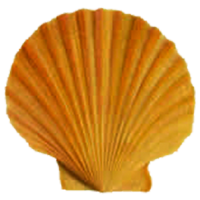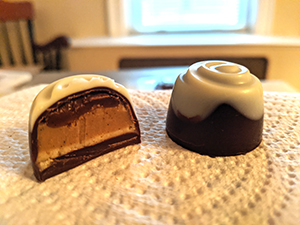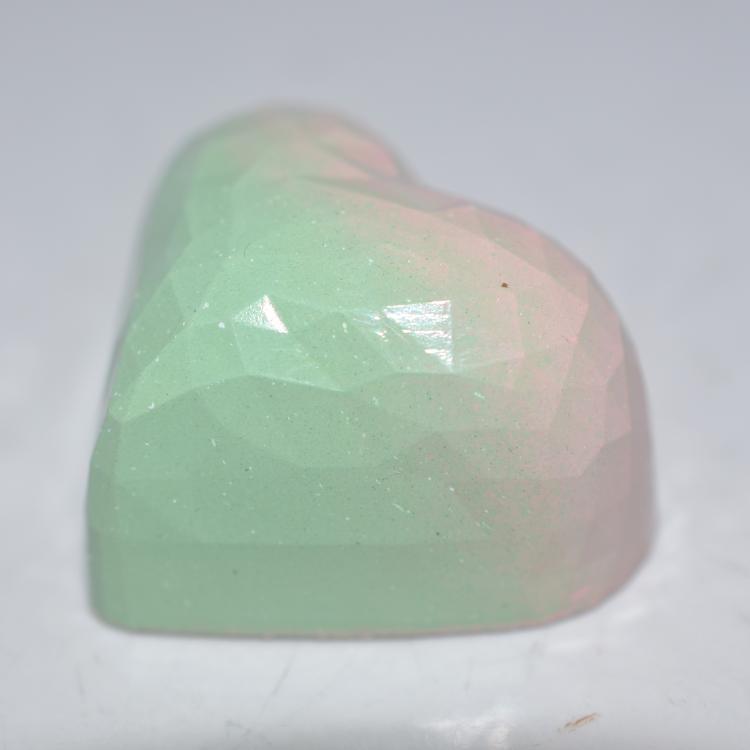-
Posts
2,411 -
Joined
-
Last visited
Content Type
Profiles
Forums
Store
Help Articles
Everything posted by Jim D.
-
Good to know that you have had more or less the same experience. And thanks for catching the error in the Pawkit readings.
-
Here are the results from the latest tests: Time Frame of Readings: A = immediately after ganache was made B = 3 hours later C = 12 hours after reading B Readings for Each Sample: 1 = sample was left uncovered for all readings and was not stirred until before reading C A = 0.69 B = 0.58 C = 0.69 2 = sample was covered between all readings and was not stirred until before reading C A = 0.69 B = 0.75 C = 0.75 3 = sample was left uncovered for all readings and stirred before readings A and C A = 0.67 B = 0.70 C = 0.69 The instrument was the Pawkit from Meter Group (previously Decagon Devices). The readings are supposed to be accurate within 0.2 [correction: 0.02] units of water activity. For me, Sample 1 is the most relevant because the readings clearly show that my previous conclusion, that by simply letting a ganache sit for a while its Aw will decrease, was inaccurate. I should have thought of the fact that the meter was measuring the top surface (at least I think that's what it does). The 0.69 reading stubbornly remains the same when the sample is stirred. I am puzzled by the readings for sample 2 (which was covered throughout): they actually rise over time, whether stirred or not. I would think sample 3 most clearly parallels what the chocolatier experiences since stirring the sample before readings brings more of the ganache to the top for measuring each time (why the second reading rose I cannot explain). My (disappointing) conclusion: The Aw reading of a ganache remains approximately the same throughout the process--what you initially make is what you get. There are, it would seem, no magic factors in getting the water level activity lower.
-
You mention a perhaps-crucial issue: Is it just the surface of the ganache that is drying out, therefore leading to the possibility that the later reading is not a true reflection of the Aw? Today, as it happens, I am making your cinnamon bonbon ganache, so this time I will take three samples, measuring one as I have done with the recent ones, keeping one covered between the two readings, and stirring up the third one before the second measurement.
-
I am leaving them uncovered. As I said above, this is what happens when a ganache is piped into a shell that is not going to be sealed for another day, so I thought it was a quite similar situation. Even allowing for variations in meter accuracy, there is no question readings are dropping. Next time I'll cover the sample between readings, but I don't think this would accurately reflect what happens in real production.
-
Yes, room temperature (about 70F). The Aw meter doesn't allow a reading unless the meter and the sample are at approximately the same temp.
-
I have performed the experiment once more and am getting what one might call a "consistent inconsistency." I made Wybauw's pear recipe (Fine Chocolates Gold, p. 309). The Aw reading immediately after the ganache was piped was 0.78. Approximately three hours later, the same sample produced a reading of 0.64. For someone who is quite cautious about shelf life issues, these readings are very good news.
-
Glad to hear you have also had "wild fluctuations." Just for the record, my samples yesterday were sitting in their little testing cups, not in the bowl in which I had made the ganache, so evaporation would have been minimized. Ordinarily I measure Aw early because it's much easier to get a sample into the cup when fluidity is at its maximum, but it had certainly never occurred to me such a change in Aw was likely, even possible. There is a Wybauw recipe for black currant ganache that I like very much (especially paired with hazelnut gianduja), but I have avoided making it very often because of the Aw reading of 0.83 that resulted. The ganache has always puzzled me because the ratio of chocolate+cocoa butter to liquid (which is all black currant purée) is about 2.5 to 1, thus it should not be problematic. Next time I make this I will do the retest and see if it improves over time. I do think leaving the test cups uncovered between readings makes the most sense because that is, as I previously stated, what happens after a filling has been deposited into a shell, but I am certainly open to corrections of my assumption (I am not a scientist, I just pretend to be one with my Aw meter).
-
As @Muscadellesuggested, letting ganaches crystallize for a while might produce a different Aw reading. I have now done that. Today I made my new "custard ganache" with fiori di Sicilia flavoring and tested it. To my dismay, the reading was 0.85, much higher than the numbers from my experimental batch with this filling. This recipe was for 50% custard (cream with custard powder) and 50% white chocolate. After a few hours had passed, it occurred to me that this was a good time to try the experiment. And the second reading was 0.68, an amazing difference. I had a second sample, and it produced a reading different by only 0.1. The ganache samples had been sitting in open containers, but I can't imagine there was that much evaporation from a substance so relatively viscous, after only a few hours had passed, and in a cool space--a situation that basically emulates a ganache sitting in a shell waiting to be sealed.
-

Molded and Filled Chocolates: Troubleshooting and Techniques
Jim D. replied to a topic in Pastry & Baking
I agree about white chocolate (and so many customers just reject it without even tasting it). I think sometimes it is the best choice (strawberry comes to mind). Thanks for the tip about elderflower extract. -

Molded and Filled Chocolates: Troubleshooting and Techniques
Jim D. replied to a topic in Pastry & Baking
Thanks for that helpful information, which is exactly what I guessed would be the case. As I said previously about a "custard ganache," the egginess probably gets lost with the other flavorings of the ganache since the flavoring has to be strong enough to stand up to the chocolate used in the shell (and likely the ganache as well). So many flavors that seem as if they would be delicious in a ganache--elderflower comes to mind--get lost when molded (or are so subtle as to be recognizable only when the chocolatier points them out). Elderflower popped into my mind as I just finished a piece of toast with delicious rhubarb and elderflower jam made by a friend. I had to stop myself from the first thought that came to mind: wouldn't this be delicious in a bonbon? -

Molded and Filled Chocolates: Troubleshooting and Techniques
Jim D. replied to a topic in Pastry & Baking
Very helpful information, Ruth. Yum! for the lemon curd idea. -

Molded and Filled Chocolates: Troubleshooting and Techniques
Jim D. replied to a topic in Pastry & Baking
You definitely have a point. I use sugar cookies (which include eggs) as inclusions in bonbons, so what would be the difference? But both Greweling and Notter specifically exclude egg ganaches from their books (Wybauw does not). Perhaps overly cautious? In the case of the ganache I described above, eggs aren't really necessary for the taste. They would make the custard mixture taste "richer," but I doubt that aspect of the taste would be noticed by most people (pastry cream and similar products are a different matter). -

Molded and Filled Chocolates: Troubleshooting and Techniques
Jim D. replied to a topic in Pastry & Baking
Regarding the use of Bird's custard powder: I made the powder from an online recipe (confectioner's sugar, cornstarch, nonfat milk powder). First you mix the powder with a little cold milk (I used cream), then whisk it into the rest of the milk/cream and bring to a simmer. Of course at that point it has no taste (but then neither does crème anglaise nor pastry cream at that stage--the flavoring is essential). I then treated the mixing of the custard and some white chocolate as one would a regular ganache. I used proportions of about 55% Opalys chocolate to 45% custard. It formed an emulsion, but the fat in the Opalys was too much, and it separated. So I beat in some more custard, and that fixed the issue. Therefore it seems that a 50-50 mix might work. That would be a significant change from the usual proportions required for a cream ganache. Then I tried out my new fiori di Sicilia flavoring; the resulting taste was very good. But would this ganache set? Within a few hours It had set enough that cavities could have been sealed, and by the next day it had set even more but was still creamy and somewhat soft. I can see this ganache paired with an apricot pâte de fruit. Another crucial question: would this creamy, custardy ganache have the high water activity level I anticipated? It did not--the reading was 0.70. I'm guessing that the added solids (cornstarch and milk powder) were responsible for that. I haven't begun experimenting with added sugars (glucose, invert, sorbitol). The breaking of the ganache would also suggest that even less chocolate could be used. The advantage to this filling for me (over, say, a regular vanilla cream ganache such as Notter's or a buttercream using fondant, butter, and chocolate) is that it needs less chocolate to get it to set, thus allowing for more flavoring to come through. Perhaps even that elusive blueberry flavor or, the most challenging for me, peach flavor? Further experiments will involve using dark chocolate instead of white and adding vanilla seeds and extract for a buttercream/crème brûlée filling. If anyone can point out any pitfalls in this experiment, I would welcome that information. For example, does cornstarch do something terrible inside a bonbon? Is this filling more likely to have mold grow? I don't think Aw can fully predict mold growth, but am not sure about that. This recipe reminded me a bit of Notter's lime ganache, in which he uses pectin to thicken the ganache, allowing for less chocolate to be used and for more lime juice to be added for a stronger flavor. -
@Rajala has been kind enough to send me the link to the cinnamon bun bonbon recipe on his website. One rather humorous note: If you have Google translate the page from Swedish to English, the "Krisplager" (crisp layer) gets translated as "crisis layer." But all is well--no crisis developed. The mold, which is perfect for the bonbon, suggesting the swirl on top of a cinnamon bun, is Cabrellon 6442. I could not find an importer of Cabrellon in the U.S., but the mold can be ordered directly from Cabrellon or from Chocolat Chocolat in Montreal, Canada (4-6 weeks delivery time). Side note: too bad Cabrellon molds are so difficult to obtain in the U.S. They have a large catalogue with lots of tempting molds. One interesting fact I discovered in the process of getting the molds from Europe: anything with a value under $800 enters the U.S. duty-free--I did not know that. I had the shipment within three days of placing the order. I served this bonbon recently with other chocolates at a party. It was the item that got most of the attention and positive comments. After a lot of experimentation and tasting, I made a few changes to the recipe (which Rajala and I have discussed). For the ganache, I used Valrhona Orelys, which has some brown sugar/molasses notes, instead of the mixture of dark and milk chocolate in the recipe. For the crispy layer, I could find nothing like the Swedish crispy cinnamon buns Rajala included, so used a recipe for cinnamon bun cookies (sugar cookie dough with cinnamon and sugar, rolled up, sliced, baked until crisp, then ground coarsely in a small food processor). To the crumbs I added Valrhona Opalys and spooned it on top of the ganache (the crumbs were much too coarse to pipe). I used 65% dark chocolate for the shell to reduce the sweetness. I'm about to try a version with a 72% dark to reduce the sweetness further. This is a delicious chocolate, and I send my thanks to Rajala for sharing it and discussing it in innumerable back-and-forth emails. Top layer is dark caramel with sea salt, next layer (not really visible) is a few toasted pecans, large middle layer is cinnamon, browned butter, and Orelys ganache, thin bottom layer is coarsely crumbled cookies surrounded by a little white chocolate.
-

Molded and Filled Chocolates: Troubleshooting and Techniques
Jim D. replied to a topic in Pastry & Baking
Thanks for digging that out. As a bonbon filling, I think we might be talking a day or two! I happened to see a co-worker of my kitchen/recipe inspector last night, and I brought up the issue of using eggs in bonbons. He agreed that the inspector would have a stroke for sure. -

Molded and Filled Chocolates: Troubleshooting and Techniques
Jim D. replied to a topic in Pastry & Baking
I do the shards thing, too, covering them with a little thinned-out white chocolate to keep them crunchy. But for the cream part, I have always used your buttercream recipe with lots of vanilla. If I could make something more custardy, however, that would be better. I'm thinking Aw may be an issue with the liquid it will take to mix with the Bird's. Probably add in some white chocolate. -

Molded and Filled Chocolates: Troubleshooting and Techniques
Jim D. replied to a topic in Pastry & Baking
Are you able/willing to share that recipe or a description of how you made the filling? -

Spraying Chocolate: Equipment, Materials, and Techniques
Jim D. replied to a topic in Pastry & Baking
That is a very good price (savings of about $100). I also checked with Jerry Carter Airtools, and they have the same pricing, so it must be a universal drop in price. It's almost worth buying a second one "just in case." Of course, it might also mean that Grex is planning to introduce a new model soon. The "Choco-Grex" with built-in heating unit at long last? -

Molded and Filled Chocolates: Troubleshooting and Techniques
Jim D. replied to a topic in Pastry & Baking
I certainly would agree as far as regular sweets go. Just make a custard from eggs. But as far as bonbons go: In some chocolate books (Wybauw, for instance) there are recipes for egg ganache, but I would not be comfortable using fresh eggs (even cooked) in a bonbon. I think my food inspector might have a heart attack over the very thought. I did find recipes for making one's own Bird's custard powder. The only difference from that and the product from the shelf would be that I could be certain that the dried milk powder is as fresh as possible (old milk powder has a really unpleasant smell). When all is said and done, however, I have a suspicion that yellow food coloring is the crucial ingredient in eggless custard substitute--a good example of the crucial nature of "eating with the eyes." -

Molded and Filled Chocolates: Troubleshooting and Techniques
Jim D. replied to a topic in Pastry & Baking
I would be very interested in knowing whether you end by using Bird's Custard (or other similar items) and whether you get that elusive eggy flavor. I have wanted to achieve this (as in a crème brûlée bonbon), but when I saw the ingredient list for Bird's (cornflower, salt, coloring, flavoring--no eggs), I gave up. It appears to be an illusion, and while I am not averse to illusions and realize that taste is often governed by what we expect, I never got any Bird's to try. I don't see why dried egg would have any negative impact on Aw (taste may be another issue). There is a famous chocolate shop in New York, Kee's, that offers a crème brûlée item and insists it be consumed with two days. It gets rave reviews, but I assume Kee's keeps their food insurance premium paid up. -
I do it both ways, mostly the first. I send out an email to those on my list to announce the ready date of the next batch. I state a deadline about two weeks before that date (which is how long the process takes) and provide an online order form. I mostly adhere to the cutoff date and so know how many pieces I MUST make. But experience has taught that people will forget deadlines, encounter last-minute needs for boxes of chocolates, etc., so I now make lots of extras. If those are not claimed soon after the pickup date, I freeze them for "between-batch" emergencies. So far no boxes have gone unclaimed, eventually. I also have two wholesale accounts and can always use extras for those. For the batch I am currently working on, I have not sent out a notice because I am committed to two events that must take precedence, and customers have somewhat lower expectations because of the very warm weather. But I am making enough extras so that I will be able to provide some boxes. When everything is done, I will send out a notice and then take orders until everything is gone. But the first method is what I normally do. It works well for me since I make the chocolates in my home kitchen and cannot turn it over constantly to bonbon production--batches must be finite and cannot be gigantic. I have reluctantly turned down two newspaper interviews simply because I know I cannot fulfill many more orders. I would love to have a shop in the flourishing downtown where I would have a gorgeous glass case with a constant display of many different bonbons, but that would require more employees and much money, and is, alas, for another life.
-
@Sweet Impact Mama, those are indeed beautiful--and quite close to the Monde du Chocolat technique. Thanks for sharing the photos and especially the description of the technique you used. I agree about the importance of choosing colors carefully. I do a marbled effect with layers of colors painted with a brush (an idea from Andrey Dubovik) and have learned that sharp contrasts don't work well at all. For instance, brushing layers of (translucent) red, then orange or yellow or even green is fine, but then airbrushing the entire mold with a light color intended to blend with the previous two colors doesn't work.
-
Here's what I did: On second looks, it doesn't resemble the work of Monde du Chocolot all that much. And, in the interest of honesty, the flavor combination was disappointing so much so that I am officially giving up on rhubarb as a bonbon ingredient. Even though the rhubarb pâte de fruit was delicious on its own, the strawberry ganache and Zéphyr caramel shell overwhelmed it. Rhubarb is for pies and similar pastries, not (IMHO) chocolates.
-
I've been trying to get something close to that for a long time, ever since I saw her Easter eggs. One year I printed out the images of some of the eggs and had them in front of me to see if I couldn't get that blended effect, but did not succeed. I think there is either white chocolate or white cocoa butter used to get the pastel painting effect, but I don't have her skill. Unfortunately she is not one of those chocolatiers who shares her secrets! Without making a deliberate effort to emulate the blended pastel look, I recently got something roughly similar when I airbrushed a gradient of light pink and light green cocoa butter, then used white chocolate for the shell (the filling was rhubarb and strawberry, thus the color choices), but it was nowhere close to the stunning effects she obtains.
-
Looks delicious. And the decoration nicely suggests the contents. Another of your specialty multi-layered bonbons. So can you reveal the contents? Some cinnamon ganache?






